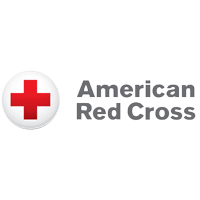No products in the cart.
AED's
The Impact of Philips AEDs on Public Health: Success Stories
Overview of Philips AEDs
Philips AEDs have become synonymous with cutting-edge technology designed to intervene in critical moments. Their user-friendly interface and reliability contribute significantly to their success in emergency situations.
Key Features that Contribute to Success
Philips AEDs work well because they have smart sensors that can quickly analyze heart rhythms and the ability to give electric shocks at the right time to return normal rhythm. These features were carefully designed to be as useful as possible and improve the chances of a good result in an emergency.
AED Saves Lives: Exploring Real-life Interventions
Philips AEDs save lives more than their technical specs can say. A lot of real-life examples show that the device can look at what’s going on, give clear directions, and quickly send shocks in cardiac emergencies. These projects help people live better and save lives.
Community AED Success
Impact on Cardiac Arrest Survival Rates
AEDs have a huge effect on the number of people who survive cardiac arrest. Putting these gadgets in easy-to-reach places and making people more aware of them has helped more people survive. AED use spreads through neighborhoods and improves the health of individuals and families.
AED Deployment Strategies and Success Metrics
Community AED efforts go beyond distribution. Projects must consider traffic, demography, and reaction times in high-traffic areas. Success measures go beyond device deployment. Usage, reaction times, and, most significantly, lives saved are included.
Real-life AED Interventions
In real-life AED actions bring the numbers to life and show how useful the devices are in a variety of settings. From city streets to remote areas, these stories show how important AEDs are in the chain of life and how they could have a big effect on public health.
Public Health and AEDs
Integrating AEDs into Public Health Initiatives
Public health efforts recognize AEDs’ vital role in emergency response. AEDs are becoming a staple of public health programs, helping to protect community health. Integration strengthens and improves healthcare infrastructure, especially for time-sensitive cardiac emergencies.
Addressing Gaps in AED Awareness
Many populations lack AED awareness despite their efficacy. AED awareness, use, and cardiac emergency survival rates are crucial to closing these gaps, and public health efforts are crucial. These awareness gaps must be closed to maximize AED life-saving potential.
Achievements in Enhancing Emergency Preparedness
Community resilience projects that promote AEDs see success. Community resilience and emergency response times have improved. When seamlessly integrated into public health initiatives, Philips AEDs Heartstart Onsite improve response to emergencies.
AED Deployment Success
Examining Successful AED Deployment Programs
The success of AED implementation goes beyond device distribution. Successful programs show careful planning, placement, and community interaction. AED deployment programs in public spaces, businesses, and homes operate best with a thorough strategy that maximizes accessibility and coverage.
Strategies for Optimizing AED Distribution
High-traffic regions, demographics, and response times must be considered while optimizing AED distribution. Successful programs strategically put AEDs in high-need areas to speed up cardiac emergency response.
Community-Based Initiatives for AED Accessibility
Communities are crucial to AED implementation. Active community involvement in AED placement, maintenance, and awareness promotes safety. AEDs become community assets through community-based programs that promote shared responsibility.
Cardiac Arrest Survival Stories
Heartwarming stories of individuals surviving cardiac arrest showcase the effectiveness of AED interventions. These stories demonstrate how well people handle life-threatening situations and how AEDs can save lives.
The Role of AEDs in Increasing Survival Rates
Beyond individual stories, statistical studies show that AEDs significantly improve cardiac emergency survival rates. We examine data linking rapid AED deployment to increased survival rates, emphasizing the consequences for community well-being.
Emergency Response Achievements
Recognizing achievements in emergency response with AEDs showcases their key role in successful outcomes. From collaborations between emergency services and AED manufacturers to creative response time improvements, these achievements highlight the wider effects of effective emergency management.
Collaborations andEmergency Response Integration
AED manufacturers and emergency services collaborate to improve emergency response. These collaborations aim to streamline communication, optimize AED placement, and enhance emergency protocols. The integration of AEDs into emergency response systems demonstrates the commitment to saving lives.
Technological Innovations in Emergency Response
The use of technology in emergency response has revolutionized the field. Innovations such as mobile AED apps, real-time monitoring, and automated notifications enable faster response times and improved outcomes. These advancements enhance the effectiveness of AED interventions.





